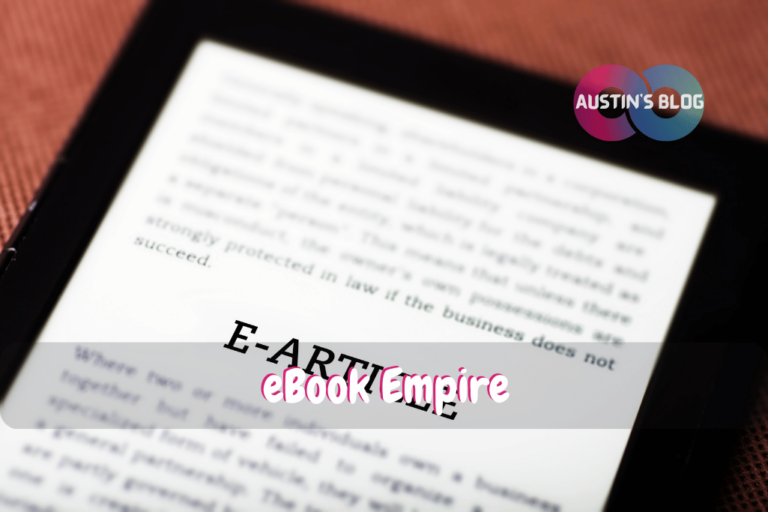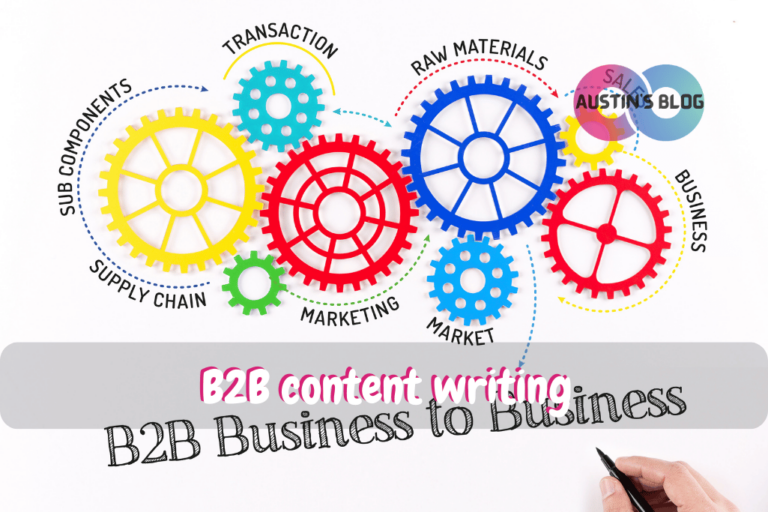How to Write Professional White Papers: A Comprehensive Guide for 2025
Introduction
Did you know that 71% of B2B buyers use white papers to research purchasing decisions? [1]
In today’s content-saturated world, white papers stand out as powerful tools for establishing authority, educating audiences, and influencing decision-makers.
Whether you’re a business professional, content writer, or marketing specialist, mastering the art of white paper writing can make you an invaluable asset to any organization.
Welcome to your comprehensive guide to white paper writing!
While blog posts and articles might get the lion’s share of attention in content marketing discussions, white papers remain the heavyweight champions of in-depth, authoritative content.
They’re the go-to resource for businesses looking to demonstrate expertise, solve complex problems, and guide high-stakes decisions.
In this guide, we’ll walk you through everything you need to know about creating professional, compelling white papers that engage readers and drive results.
From understanding the basics to mastering advanced techniques, we’ll cover every aspect of white paper writing to help you create documents that stand out in today’s competitive marketplace.
So, grab your favorite note-taking tool, and let’s dive into the world of white paper writing. Your journey to becoming a skilled white paper writer starts here!
Understanding White Papers
Before we dive into the writing process, let’s establish a clear understanding of what white papers are and why they matter.
Definition and Purpose:
White papers are authoritative, in-depth reports or guides that address complex issues and propose solutions. They combine:
– Detailed research
– Professional expertise
– Logical arguments
– Practical solutions
I remember when I wrote my first white paper, thinking it was just a long blog post. I quickly learned that white papers require a much more structured, evidence-based approach.
Different Types of White Papers:
1. Technical White Papers:
– Focus on product specifications
– Detailed technical information
– Implementation guidelines
– Performance data
2. Business Benefits White Papers:
– Highlight solutions to business problems
– Focus on ROI and value proposition
– Include case studies and success stories
– Present market analysis
3. Problem/Solution White Papers:
– Identify industry challenges
– Present comprehensive solutions
– Include implementation strategies
– Provide actionable recommendations
When to Use White Papers:
White papers are particularly effective for:
– Launching new products or services
– Explaining complex solutions
– Influencing decision-makers
– Establishing thought leadership
I once helped a client transform their technical documentation into a white paper that not only explained their innovative solution but also helped secure several major contracts.
Target Audience Considerations:
Understanding your audience is crucial for white paper writing successes:
Primary Audiences:
– C-level executives
– Technical decision-makers
– Department heads
– Industry professionals
Factors to Consider:
– Technical knowledge level
– Industry familiarity
– Decision-making authority
– Information needs
One of my most successful white paper writings was targeted specifically at CTOs in the healthcare industry. The narrow focus allowed for much more relevant and impactful content.
Essential Elements of a Professional White Paper Writing
Let’s explore the key components that make up successful white paper writings.
1. Executive Summary
The executive summary is often the most-read section of your white paper writing. Make it count!
Purpose and Importance:
– Provides quick overview
– Highlights key findings
– Presents main conclusions
– Encourages further reading
Key Components:
– Problem statement
– Proposed solution
– Key benefits
– Principal findings
– Call to action
Writing Tips:
– Keep it concise (1-2 pages)
– Focus on business value
– Use clear, direct language
– Include compelling statistics
2. Problem Statement
The problem statement sets the stage for your entire white paper and needs to resonate with your readers.
Identifying the Issue:
– Clear problem definition
– Industry context
– Impact on businesses
– Current market challenges
I once helped a client revise their problem statement from a technical focus to a business impact focus – it transformed the effectiveness of their white paper completely.
Market Context:
– Industry trends
– Competitive landscape
– Regulatory environment
– Market dynamics
Pain Points and Challenges:
– Specific business challenges
– Cost implications
– Operational inefficiencies
– Risk factors
Tips for Writing Effective Problem Statements:
– Use data to validate the problem
– Include real-world examples
– Demonstrate industry understanding
– Appeal to emotional and logical decision-making factors
3. Solution Discussion
This is where you present your solution in a clear, compelling manner.
Proposed Solutions:
– Comprehensive explanation
– Step-by-step approach
– Technical details
– Implementation considerations
Benefits and Features:
– Clear value proposition
– Measurable outcomes
– Competitive advantages
– ROI analysis
Implementation Considerations:
– Resource requirements
– Timeline expectations
– Potential challenges
– Success factors
4. Supporting Evidence
Strong evidence transforms your white paper writing from opinion to authoritative resource.
Research and Data:
– Industry statistics
– Market research
– Academic studies
– Original research
Case Studies:
– Real-world examples
– Success stories
– Implementation details
– Measurable results
Expert Opinions:
– Industry thought leaders
– Technical experts
– Customer testimonials
– Third-party validation
Remember, the quality of your supporting evidence can make or break your white paper.
I once spent two weeks just gathering and verifying data to promote a single white paper writing execise – it was worth it when the paper became the company’s most successful lead generation tool.
White Paper Writing Structure and Format
1. Title Page
Your title page is the first impression readers will have of your white paper.
Creating Compelling Titles:
– Include key benefits
– Use numbers when applicable
– Address target audience
– Incorporate keywords
Design Elements:
– Clean, professional layout
– Company branding
– Publication date
– Contact information
2. Table of Contents
A well-organized table of contents helps readers navigate your written white paper effectively.
Organization:
– Clear hierarchy
– Logical flow
– Page numbers
– Section descriptions
Navigation Tips:
– Use descriptive headings
– Include subheadings
– Consider hyperlinks for digital versions
– Keep formatting consistent
3. Body Content
The body of your white paper needs to maintain engagement while delivering valuable information.
Section Organization:
– Logical progression
– Clear transitions
– Consistent formatting
– Information hierarchy
Flow and Transitions:
– Use transition sentences
– Maintain narrative flow
– Connect ideas clearly
– Guide reader through content
Length Considerations:
– Typically 6-12 pages
– Section balance
– Content density
– Reader attention span
4. Visual Elements
Visual elements enhance understanding and break up dense text.
Charts and Graphs:
– Data visualization
– Trend illustration
– Comparison charts
– Performance metrics
Infographics:
– Process flows
– Key statistics
– Concept illustration
– Timeline visualization
Design Principles:
– Clean, professional style
– Consistent branding
– White space utilization
– Color psychology
Step-by-Step Writing Process
1. Planning Phase
Proper planning is crucial for creating an effective white paper.
Research and Preparation:
– Market research
– Competitor analysis
– Data gathering
– Expert interviews
Outline Creation:
– Main sections
– Key points
– Supporting evidence
– Visual elements needed
Resource Gathering:
– Reference materials
– Case studies
– Statistics
– Expert quotes
Timeline Development:
– Research phase
– Writing schedule
– Review cycles
– Production timeline
2. Writing Phase
The writing phase requires focus, clarity, and attention to detail.
First Draft Tips:
– Focus on content flow
– Don’t overthink style initially
– Keep research handy
– Track citations
Voice and Tone:
– Professional but accessible
– Authoritative yet engaging
– Consistent throughout
– Appropriate for audience
Technical Considerations:
– Industry terminology
– Technical accuracy
– Explanation level
– Definition of terms
3. Editing Phase
Thorough editing ensures white paper writing meets professional standards.
Self-editing:
– Content accuracy
– Flow and readability
– Grammar and style
– Formatting consistency
Peer Review:
– Technical accuracy
– Content clarity
– Readability
– Overall impact
Expert Review:
– Subject matter expertise
– Industry perspective
– Technical validation
– Market relevance
Final Polishing:
– Proofreading
– Formatting check
– Citation verification
– Visual element review
Remember, a white paper is often the result of multiple iterations. Don’t rush the process – quality matters more than speed.
White Paper Writing Best Practices
Following these best practices will help ensure your white paper achieves its intended goals.
Professional Tone:
– Maintain objectivity
– Use authoritative voice
– Avoid promotional language
– Balance technical and accessible language
I once revised a white paper that was too promotional in tone. After adopting a more objective approach, the conversion rate doubled.
Data Presentation:
– Present data clearly and accurately
– Use relevant statistics
– Provide context for numbers
– Include source citations
Best practices for data visualization:
– Choose appropriate chart types
– Keep designs clean and simple
– Use consistent formatting
– Include clear labels and legends
Formatting Guidelines:
– Consistent font usage
– Clear heading hierarchy
– Appropriate white space
– Professional color scheme
Distribution Strategies:
– Gated vs. ungated content
– Email campaigns
– Social media promotion
– Sales team utilization
– Partner distribution
Common White Paper Writing Mistakes to Avoid
1. Overly Promotional Content
The biggest mistake I see in white papers is being too sales-focused.
Common pitfalls:
– Using sales language
– Focusing too much on product features
– Neglecting industry context
– Making unsubstantiated claims
How to avoid:
– Focus on education over promotion
– Back claims with data
– Address industry challenges
– Maintain objectivity
2. Poor Research
Inadequate research can undermine your white paper’s credibility.
Common issues:
– Outdated statistics
– Unreliable sources
– Limited perspective
– Insufficient data
Solutions:
– Use recent, relevant data
– Verify sources thoroughly
– Include multiple perspectives
– Conduct original research when possible
3. Lack of Focus
A scattered approach diminishes your white paper’s impact.
Signs of poor focus:
– Covering too many topics
– Straying from main argument
– Inconsistent messaging
– Unclear objectives
How to maintain focus:
– Define clear objectives
– Create detailed outline
– Stay on topic
– Regular content reviews
4. Insufficient Evidence
Claims without proper backing weaken your white paper’s authority.
Common problems:
– Unsupported statements
– Vague references
– Missing citations
– Weak examples
Solutions:
– Include specific data
– Cite credible sources
– Use detailed case studies
– Provide concrete examples
Tools and Resources for White Paper Writing
1. Research Tools
Essential tools for gathering and organizing information:
– Google Scholar
– Industry databases
– Market research platforms
– Survey tools
Research organization:
– Evernote
– Zotero
– Mendeley
– OneNote
2. Writing Software
Tools for content creation:
– Microsoft Word
– Google Docs
– Scrivener
– Adobe InDesign
Editing and proofreading:
– Grammarly
– Hemingway Editor
– ProWritingAid
– PerfectIt
3. Design Resources
Visual content creation:
– Adobe Creative Suite
– Canva
– Piktochart
– Venngage
Chart and graph tools:
– Microsoft Excel
– Tableau
– Google Charts
– Infogram
4. Collaboration Platforms
Team coordination tools:
– Microsoft Teams
– Slack
– Asana
– Trello
Document sharing:
– Google Drive
– Dropbox
– SharePoint
– Box
Measuring White Paper Writing Successes
Understanding your white paper’s performance is crucial for improvement.
Key Metrics to Track:
– Downloads/views
– Time spent reading
– Lead generation
– Sales influence
– Social shares
– Email engagement
Analytics Tools:
– Google Analytics
– Marketing automation platforms
– CRM systems
– Social media analytics
Success Indicators:
– Conversion rates
– Quality of leads
– Sales cycle impact
– Customer feedback
– Industry recognition
Conclusion
Writing effective white papers is a valuable skill that combines research, writing, and strategic thinking. The best white papers not only inform but also influence decision-making and establish thought leadership.
Remember these key takeaways:
– Focus on providing value over promotion
– Back everything with solid evidence
– Maintain professional tone and format
– Consider your audience throughout
– Pay attention to design and presentation
Whether you’re writing your first white paper or looking to improve your existing process, success comes from attention to detail, thorough research, and a clear understanding of your audience’s needs.
Action Steps to Get Started:
1. Choose a relevant topic for your audience
2. Gather comprehensive research
3. Create a detailed outline
4. Follow the writing and editing process
5. Include appropriate visuals
6. Review and refine thoroughly
Would you like to write an impactful white paper? Start by implementing these guidelines and continuously refine your approach based on feedback and results.
Remember, white paper writing is both an art and a science.
With practice, attention to detail, and a commitment to quality, you can create white papers that effectively communicate complex ideas and drive business results.
Have you written white papers before? What challenges have you faced? Share your experiences in the comments below – your insights could help other writers improve their white paper writing skills!
Frequently Asked Questions: White Paper Writing
Q: What is the purpose of a white paper?
A: The purpose of a white paper is to provide a detailed report or guide on a specific topic, often used to present a solution to a problem or to educate potential customers about products and services.
White papers are written to establish authority and inform readers, making them a valuable tool in a content marketing strategy.
Q: How do you write a white paper that engages readers?
A: To write a white paper that engages readers, focus on a specific topic that addresses the needs or challenges of your audience.
Use clear and concise language, include compelling white paper examples, and incorporate data and case studies to support your claims. An engaging white paper should also have a logical structure and a professional white paper design.
Q: What is the typical structure of a white paper?
A: The typical structure of a white paper includes an introduction, a problem statement, a proposed solution, supporting data or case studies, and a conclusion.
Additionally, a white paper may include a call to action or next steps for the reader. This structure helps to format a white paper in a way that is logical and easy to follow.
Q: How can I create a white paper outline?
A: To create a white paper outline, start by defining the topic of your white paper and the key points you want to cover.
Organize these points into sections, such as introduction, problem, solution, and conclusion. Use bullet points to list specific details or data you plan to include in each section, ensuring a comprehensive and coherent outline.
Q: What are some white paper design tips?
A: Some white paper design tips include using a clean and professional layout, incorporating visuals like charts and graphs to illustrate data, and maintaining consistency in fonts and colors.
A well-designed white paper enhances readability and helps to keep your white paper visually appealing and engaging.
Q: How do I promote your white paper effectively?
A: To promote your white paper effectively, use a combination of digital marketing strategies such as email campaigns, social media posts, and search engine optimization.
Share your white paper on relevant platforms and consider collaborating with industry influencers to reach a wider audience.
Additionally, use a white paper as a lead magnet to attract potential customers.
Q: What are some examples of white papers?
A: Examples of white papers include technology white papers that explore new innovations, marketing white papers that discuss strategies for reaching target audiences, and case studies that highlight successful implementations of products and services.
Reviewing these examples can provide insights into how to structure and write a white paper effectively.
Q: How do I choose the right white paper template?
A: Choose a white paper template that aligns with the type of content you plan to include and the preferences of your target audience.
Consider templates that offer flexibility in design and layout, allowing you to tailor the white paper to your specific needs while maintaining a professional appearance.
Q: What role does a white paper writer play in creating a white paper?
A: A white paper writer plays a crucial role in creating a white paper by researching the specific topic, organizing the information into a coherent structure, and writing the content in a clear and engaging manner.
The writer ensures that the white paper provides valuable insights and effectively communicates the intended message to the audience.





